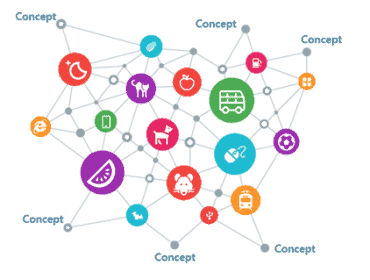
Enterprises must find the automation middle ground between software and humans to create an efficient system of checks and balances.
Shifting market dynamics and evolving consumer expectations are fueling automation curiosity, with nearly all industries competing now on two factors: cost and customer experience. While businesses have always tried to mitigate costs, consumer demands for faster service and increased transparency make it challenging to keep pace with the market while managing spend and operational complexities. And it’s often what’s happening behind the scenes that drive these challenges.
Today’s businesses are pressed with increasing volumes of unstructured data, creating backlogs and bottlenecks that result in significant customer delays. For example, people might be forced to wait weeks for an answer on a mortgage application or even longer for health insurance claims payouts—sometimes being denied a loan or given the wrong payout due to data entry errors. For the individuals at the end of this equation, a lack of urgency on the part of organizations processing loan applications or health insurance claims can cause anguish. This is where automation’s sweet spot lies, unlocking efficiencies to improve outcomes and lives.
The fact is, 94% of workers today perform repetitive and time-consuming tasks in their day-to-day roles—tasks that are ripe for automation. When it comes to knowledge workers specifically, two out of three say that automation has helped to increase their productivity. Intelligent process automation can speed up mundane tasks, reduce administrative burden and free up time for employees to focus on high-order tasks and more impactful initiatives. Intelligent automation has the potential to accelerate core processes from months to weeks and even days, meaning customers receive services faster than ever. It’s a win-win solution for both employees and the customers they serve.
While businesses are eager to implement automation solutions to cut costs and redefine the customer experience, it can be challenging to know where to start. In our experience, the best place to begin rejuvenating frontline customer interactions is in backend processes. We consider data processing the critical step zero of effective, sustainable business process automation. In other words, an enterprise’s data must be complete, accurate, and actionable before it can drive any sort of reliable downstream decision-making.
Here’s how enterprise organizations should approach business process automation to enable an effective and lasting automation revolution.
Defining the critical step zero
In both personal and professional lives, nearly everything we’ve been taught and know begins at “step one.” Yet, for that first and all subsequent steps that follow to be truly successful, the often-forgotten step zero is essential. Step zero requires taking a step back, defining the problem contextually, and articulating how potential solutions will solve the initial problem.
For today’s evolving world of modernizing operations and digitally transforming processes, the critical step zero of automating any business process starts with high-quality data—and it’s also the most challenging process, and the least understood. That’s because the common language of enterprise organizations is unstructured data formats. Unstructured data often takes the form of messy scans, low-resolution photos, lengthy PDFs, or even online portals that capture customer information, but not in a way that makes it accessible and usable by diverse systems. The data powers nearly all downstream decision-making and customer and business outcomes. But, unlocking the data and making it actionable across systems requires significant human intervention, adding friction to the free flow of information and impeding the efficient execution of business processes.
Aside from requiring unnecessary time and resources from employees to decode and make sense of the data, this friction introduces additional challenges for organizations and their customers. Without accurate data extraction at the source, “automation,” which promises time, cost, and efficiency gains, becomes meaningless, requiring humans to review and correct mistakes manually. Errors can be pushed downstream that eventually need to be corrected, hindering an organization’s ability to render informed and timely decisions. This consumes effort and time for the organization, exasperates customer frustrations due to delays and uncertainty, and, ultimately, erodes customer trust.
Over relying on inflexible automation
We already know that organizations are limited in their ability to make sense of vast volumes of data—and that’s partially due to not having the right toolset. Legacy technology and automation alternatives require structured data and well-defined rules to arrive at reliable decisions. With the rise of Robotic Process Automation (RPA) in recent years, many organizations believed they solved all back-office challenges. However, tools like RPA inevitably require additional technologies to unlock and extract the data trapped in unstructured document formats.
As enterprise organizations grow with automation, we must rely less on outdated solutions like RPA and find the middle ground between software and humans to create an efficient system of checks and balances. Forward-thinking enterprises should prioritize robust platform offerings that allow both humans and machines to collaborate and properly extract, modify, enrich and leverage actionable data. The technology solutions involving humans in the process (“human-in-the-loop” functionality) will lead to performance improvements over time—a fundamental element to a successful future of work and operational transformation.
The path forward
Though the automation revolution is upon us, many still fear and misunderstand technology and its value. Automation’s ability to reimagine workflows and processes is making room for an environment in which software and humans work side-by-side, positively impacting people and society. After all, the human brain is much better spent solving complex problems than being used for simple tasks, like transcribing another person’s handwritten form.
It’s due time that enterprise organizations think holistically when approaching automation and ask the right questions to know whether they are setting themselves up for quick wins or long-term success—and it all comes back to that critical step zero.





























